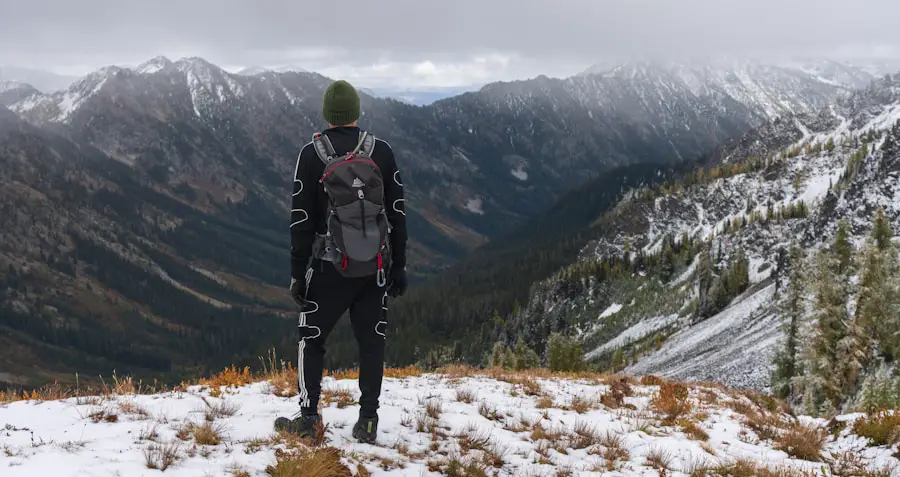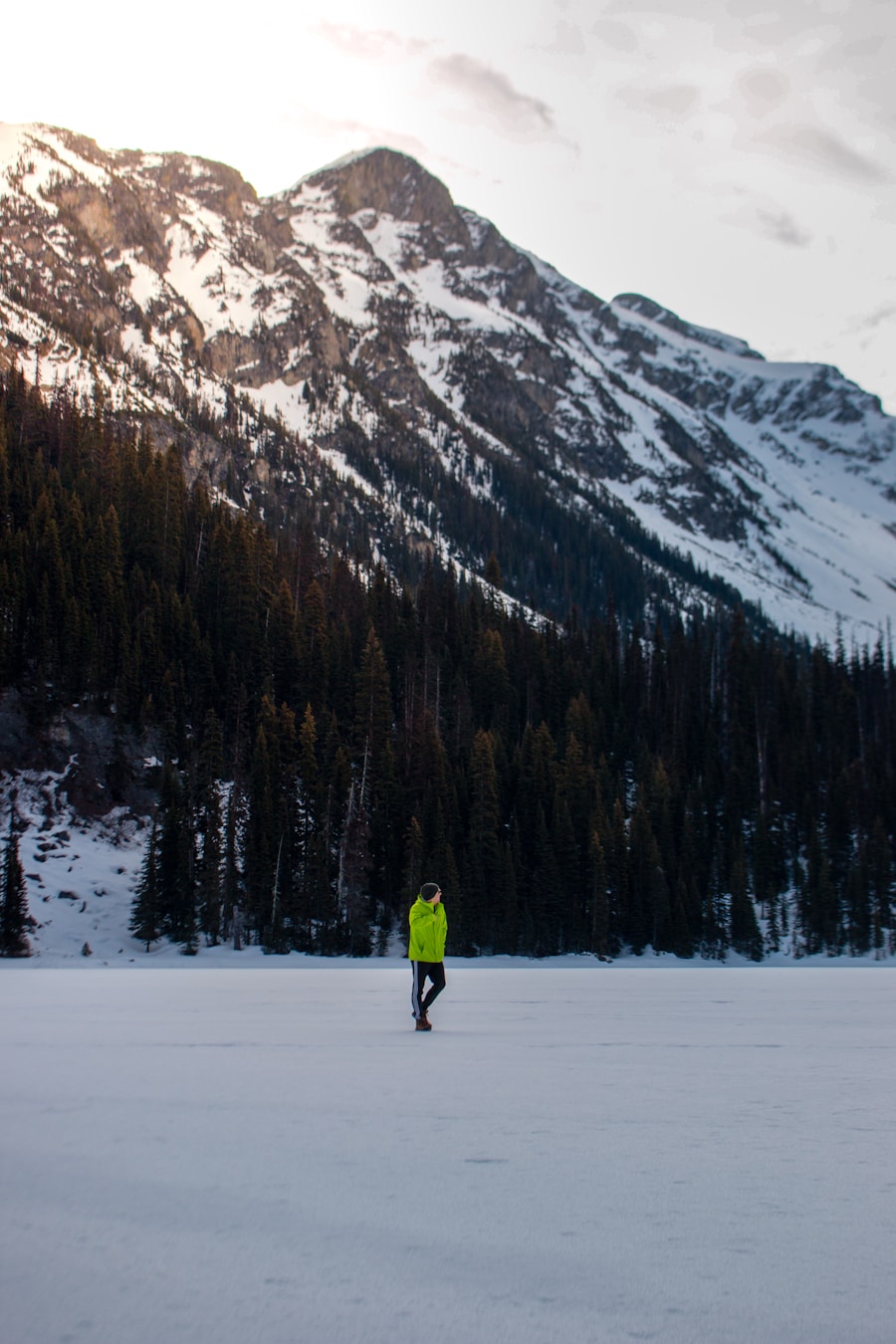Layering is a fundamental principle in outdoor clothing that allows individuals to adapt to varying weather conditions and physical exertion levels. The concept revolves around the idea of wearing multiple layers of clothing, each serving a specific purpose, to create a versatile and effective insulation system. This method not only enhances comfort but also plays a crucial role in regulating body temperature, which is vital for maintaining performance and safety during outdoor activities.
When temperatures fluctuate or when engaging in strenuous activities, the ability to add or remove layers can make a significant difference in how one feels. The layering system typically consists of three main components: the base layer, insulating layer, and outer shell. Each layer has its own function, contributing to an overall system that protects against the elements while allowing for breathability and moisture management.
Understanding how these layers work together is essential for anyone who spends time outdoors, whether hiking, skiing, or simply enjoying nature. The right layering strategy can mean the difference between a comfortable experience and one that is marred by cold, dampness, or overheating.
Key Takeaways
- Layering is important for staying warm and comfortable in outdoor activities
- Choose a moisture-wicking base layer to keep sweat away from the skin
- Insulating layers should provide warmth without adding too much bulk
- Look for an outer shell that is waterproof and breathable
- Consider accessories like hats, gloves, and scarves for added warmth
Choosing the Right Base Layer
The base layer is the first line of defense against the elements and plays a critical role in moisture management. Its primary function is to wick sweat away from the skin, keeping the wearer dry and comfortable. When selecting a base layer, it is essential to consider the material.
Fabrics such as merino wool, polyester, and nylon are popular choices due to their moisture-wicking properties and ability to dry quickly. Merino wool, in particular, is favored for its natural temperature-regulating qualities and odor resistance, making it an excellent choice for multi-day excursions. Fit is another crucial aspect when choosing a base layer.
A snug fit is ideal as it allows for efficient moisture transfer while minimizing bulk. However, it should not be so tight that it restricts movement or circulation. Many brands offer various styles, including long-sleeve tops, short-sleeve shirts, and leggings, catering to different preferences and weather conditions.
For colder climates, a thicker base layer may be necessary, while lighter options are suitable for milder temperatures or high-intensity activities.
Selecting the Proper Insulating Layer

Once the base layer is in place, the next step is to choose an insulating layer that retains body heat while allowing moisture to escape. Insulation materials can vary widely, with down and synthetic fibers being the most common options. Down insulation is renowned for its exceptional warmth-to-weight ratio; however, it loses its insulating properties when wet.
On the other hand, synthetic insulation retains warmth even when damp and dries more quickly, making it a practical choice for unpredictable weather conditions. When selecting an insulating layer, consider the activity level and expected weather conditions. For high-energy activities like skiing or snowshoeing, a lightweight fleece or synthetic jacket may provide adequate warmth without causing overheating.
Conversely, for less active pursuits in frigid temperatures, a thicker down jacket may be necessary to ensure sufficient insulation. Additionally, features such as zippered vents can enhance breathability and temperature regulation during varying levels of exertion.
Finding the Perfect Outer Shell
| Outer Shell | Material | Waterproof Rating (mm) | Breathability Rating (g/m2/24h) |
|---|---|---|---|
| Jacket A | Gore-Tex | 28,000 | 15,000 |
| Jacket B | eVent | 30,000 | 20,000 |
| Jacket C | The North Face DryVent | 25,000 | 10,000 |
The outer shell serves as the first line of defense against wind, rain, and snow. It is essential to choose a shell that offers adequate protection while remaining breathable to prevent moisture buildup from sweat. There are two primary types of outer shells: hard shells and soft shells.
Hard shells are typically made from waterproof materials like Gore-Tex or similar fabrics that provide maximum protection against the elements but may sacrifice some breathability. Soft shells, on the other hand, offer more flexibility and comfort but may not be fully waterproof. When selecting an outer shell, consider factors such as fit, weight, and intended use.
A well-fitting shell should allow for freedom of movement while accommodating layers underneath without feeling restrictive. Features like adjustable hoods, cuffs, and hemlines can enhance functionality by providing a customizable fit that seals out wind and moisture. Additionally, pockets for storage and ventilation zippers can add convenience during outdoor activities.
Considering Accessories for Added Warmth
Accessories play a vital role in enhancing warmth and comfort during outdoor adventures. Items such as hats, gloves, neck gaiters, and thermal socks can significantly impact overall thermal regulation. A significant amount of body heat is lost through the head; therefore, wearing a warm hat can help retain heat effectively.
Materials like fleece or wool are excellent choices for headwear due to their insulating properties. Gloves are another critical accessory; they should provide warmth while allowing dexterity for tasks such as adjusting gear or handling equipment. Mittens tend to offer more warmth than gloves but can limit finger movement; therefore, many outdoor enthusiasts opt for glove liners that can be worn under waterproof shells for added protection against cold and wet conditions.
Additionally, thermal socks made from merino wool or synthetic blends can help keep feet warm and dry during long hikes or cold-weather activities.
Managing Moisture and Sweat

Effective moisture management is crucial for maintaining comfort during outdoor activities. Sweat can quickly lead to chills if not properly managed; therefore, choosing materials that wick moisture away from the skin is essential. The base layer should excel in this regard, but it’s also important to consider how each layer interacts with moisture.
For instance, if an insulating layer becomes saturated with sweat, it will lose its effectiveness in retaining heat. Ventilation is another key factor in managing moisture. Many outdoor garments come equipped with features such as pit zips or mesh-lined pockets that allow excess heat to escape without removing layers entirely.
This can be particularly beneficial during high-intensity activities where body temperature rises quickly. Additionally, understanding one’s own body’s response to temperature changes can help in making timely adjustments to layering—removing or adding layers as needed to maintain optimal comfort.
Tips for Layering Effectively
To maximize the benefits of layering, it’s essential to adopt effective strategies tailored to individual needs and conditions. One fundamental tip is to always start with a moisture-wicking base layer that fits snugly against the skin. This will ensure that sweat is efficiently transported away from the body, reducing the risk of chilling when activity levels drop.
Another important consideration is to avoid cotton fabrics in any layer of clothing worn outdoors. Cotton absorbs moisture and retains it against the skin, leading to discomfort and increased risk of hypothermia in cold conditions. Instead, opt for synthetic or wool materials that provide better insulation and moisture management properties.
When planning an outing, consider the weather forecast and adjust your layering strategy accordingly. If rain or snow is expected, ensure that your outer shell is waterproof and breathable. Additionally, packing extra layers in a waterproof bag can provide peace of mind in case conditions change unexpectedly during your adventure.
Staying Safe and Comfortable on the Trail
Ultimately, effective layering contributes significantly to safety and comfort on the trail. By understanding how each layer functions and how they work together as a system, outdoor enthusiasts can better prepare for varying conditions and exertion levels. This preparation not only enhances enjoyment but also reduces the risk of hypothermia or overheating—two common hazards faced by those who venture into nature.
Moreover, being mindful of personal limits and recognizing signs of discomfort are crucial aspects of staying safe outdoors. If you begin to feel too hot or cold despite your layering system, take a moment to assess your situation and make necessary adjustments. Whether it’s adding or removing layers or taking a break to cool down or warm up, listening to your body is key to ensuring a safe and enjoyable experience on the trail.
In conclusion, mastering the art of layering is an invaluable skill for anyone who enjoys outdoor activities in varying weather conditions. By carefully selecting each layer based on material properties, fit, and intended use while also considering accessories and moisture management strategies, individuals can create a personalized layering system that enhances both comfort and safety during their adventures in nature.
If you’re planning a winter hiking trip, you may also be interested in learning about the best time to visit Niagara Falls. Check out this seasonal guide to help you plan your trip accordingly and make the most of your visit to this natural wonder. Understanding the weather patterns and peak seasons can enhance your overall experience and ensure you have a memorable trip.
FAQs
What is layering for winter hiking?
Layering for winter hiking is the practice of wearing multiple layers of clothing to provide insulation, moisture-wicking, and protection from the elements while hiking in cold weather.
Why is layering important for winter hiking?
Layering is important for winter hiking because it allows hikers to regulate their body temperature, manage moisture, and stay comfortable in changing weather conditions.
What are the three layers of clothing for winter hiking?
The three layers of clothing for winter hiking are the base layer (worn next to the skin for moisture-wicking), the insulating layer (provides warmth), and the outer layer (protects from wind, rain, and snow).
What materials are best for each layer?
For the base layer, moisture-wicking materials such as merino wool or synthetic fabrics are best. For the insulating layer, materials like fleece, down, or synthetic insulation are ideal. The outer layer should be made of waterproof and breathable materials such as Gore-Tex or eVent.
How should I adjust my layers while hiking?
Hikers should adjust their layers based on their activity level and the weather conditions. If they start to feel too warm, they can remove a layer to prevent sweating. If they start to feel cold, they can add a layer for extra insulation.
What accessories are important for winter hiking?
Accessories such as a hat, gloves, scarf, and waterproof boots are important for winter hiking to protect extremities from the cold and wind. Gaiters can also be useful for keeping snow out of boots.
